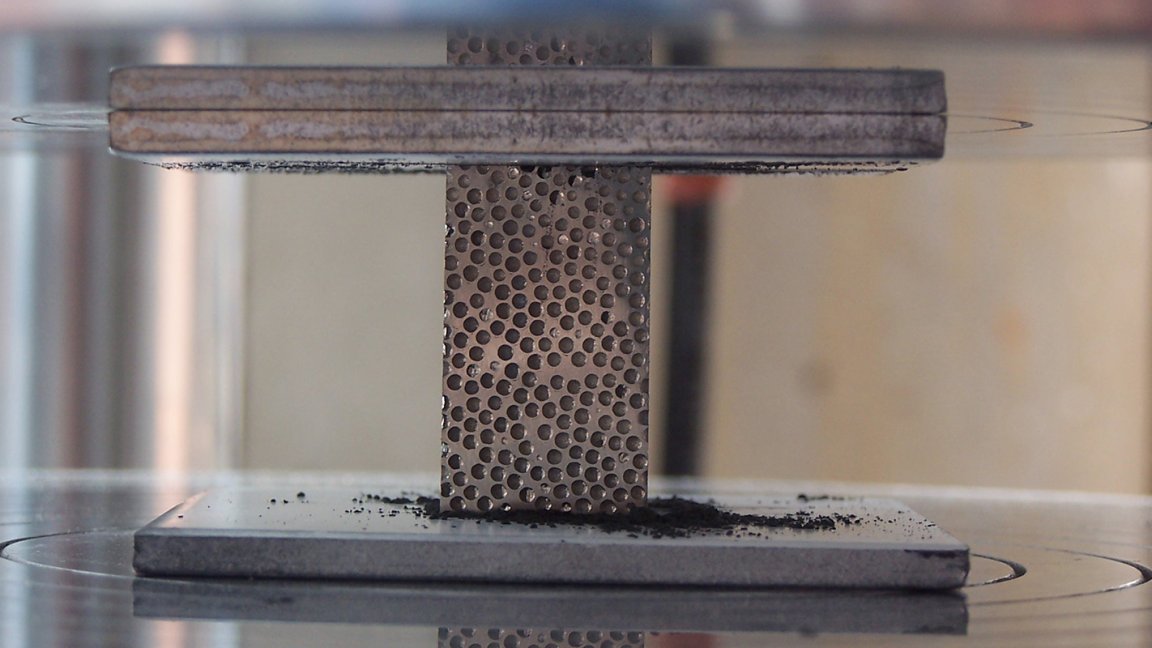
Keep the Fire Coming
Humans have a long history of working with metals, from the first metalworkers who made steel to the scientists who make higher-quality metal alloys and play with metal-based structures. Now, thanks to a new innovation from North Carolina University, we can add metal foams to this ever-growing list.
Researchers discovered that composite metal foams (CMFs) are significantly more effective at insulating against high heat than the conventional metals and alloys, such as steel. CMF consists of metallic hollow spheres—made of materials such as carbon steel, stainless steel, or titanium—embedded in a metallic matrix made of steel, aluminum, or metallic alloys.
There are two ways to make these babies. One is by casting a low melting point material, such as aluminum, around hollow spheres made of a material with a higher melting point, such as steel.
The other method is to bake the matrix powder around prefabricated hollow spheres. This creates CMFs such as steel hollow spheres in a steel matrix.

In the tests conducted during the research, the scientists exposed samples of steel-steel CMF to a fire for 30 minutes on one side, and checked to see how long it would take for the heat to reach the opposite side. It took eight minutes for the CMF to reach 800°C, while steel of the same thickness took only four. The researchers also checked the rate of expansion of the CMF when exposed to fire, which was 80 percent less than bulk steel.
It’s Not Just Heat
CMF has also proven that it is not just a better heat insulator, but a better overall material. These results showed CMF is especially promising for use in storing and transporting nuclear material, hazardous materials, explosives, and other heat-sensitive materials, as well as for space exploration. CMF also shows promise in BioMed, proving to be a lightweight alternative to rigid implants such as titanium.
“We already knew the CMFs are light-weight materials with outstanding high-velocity impact resistance, and effective radiation shielding, now we know that it can withstand high heat,” says Afsaneh Rabiei, a corresponding author of a paper on the work.